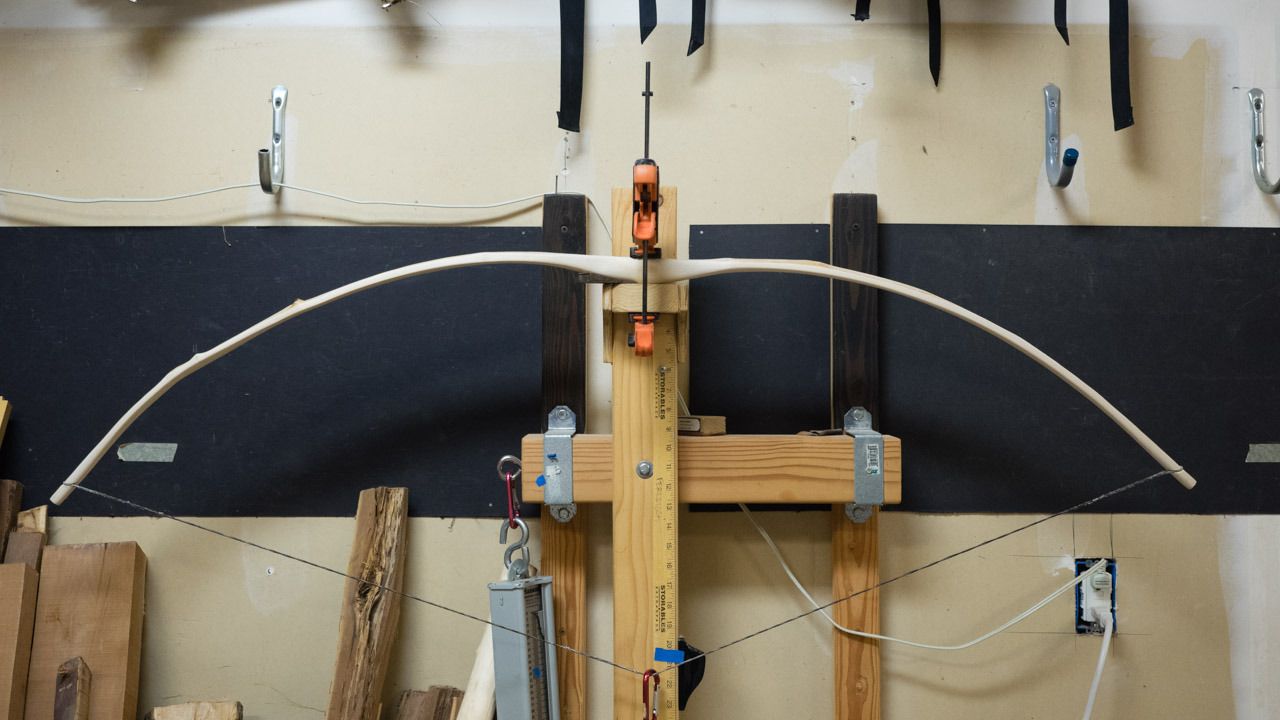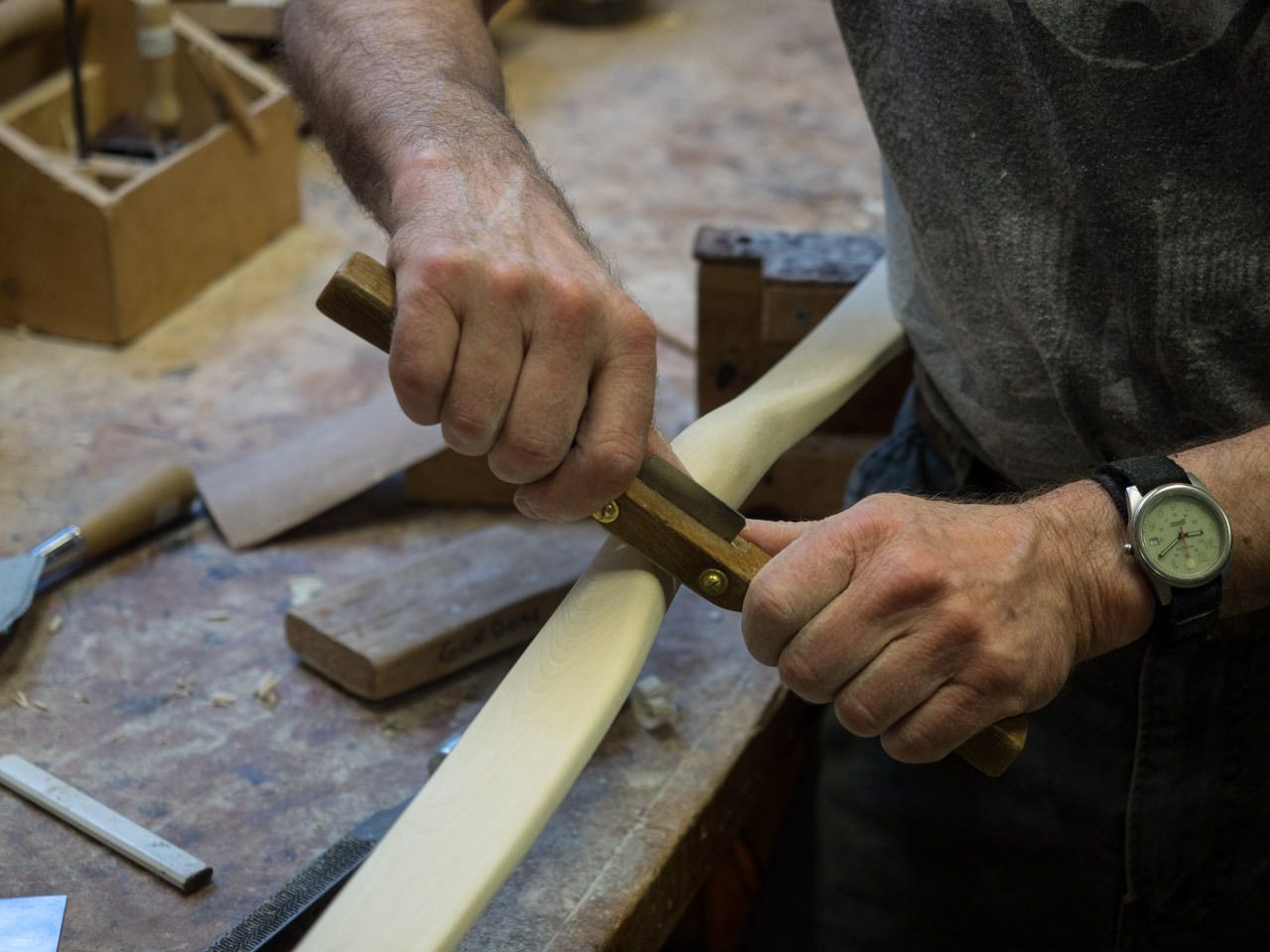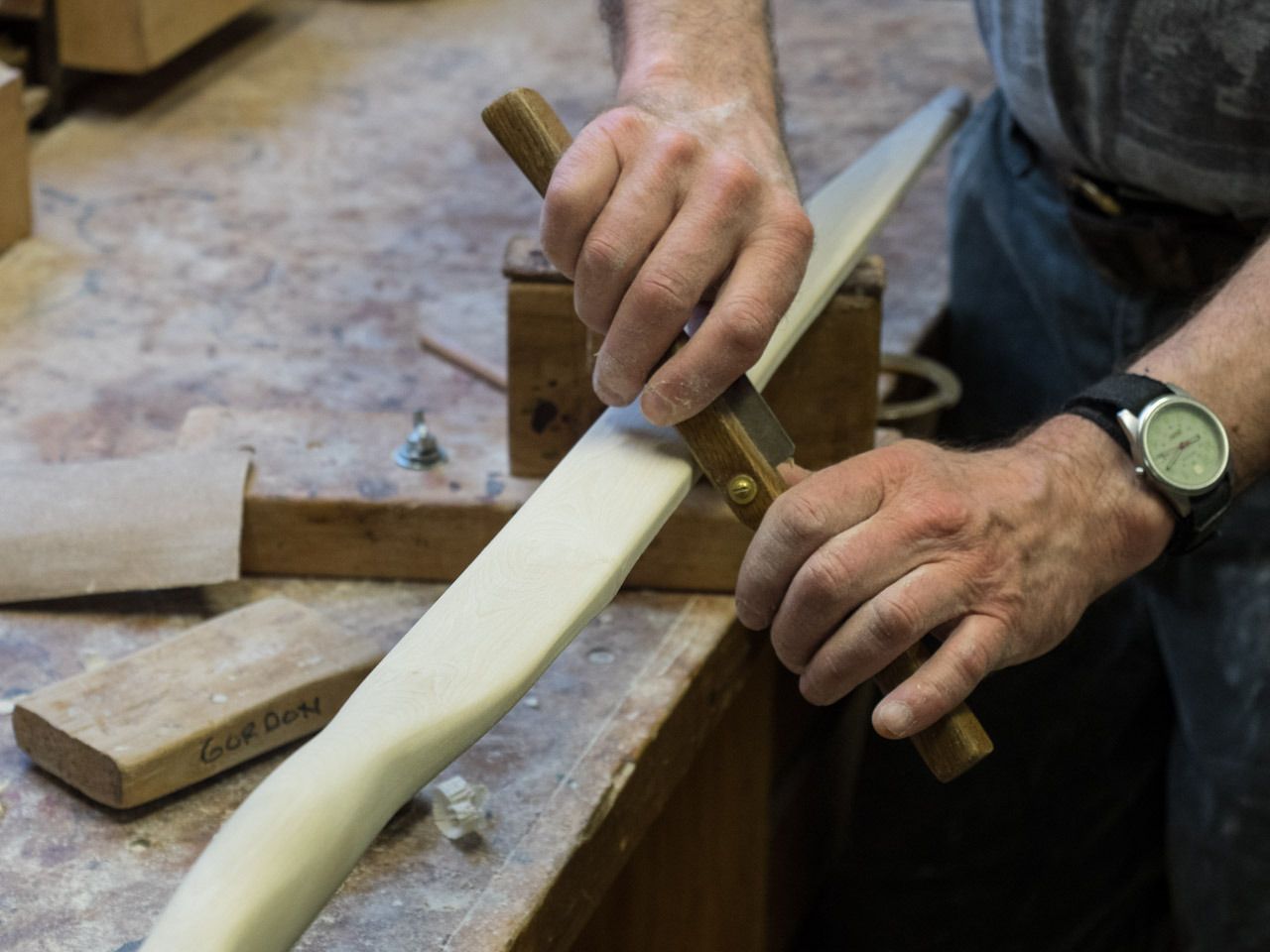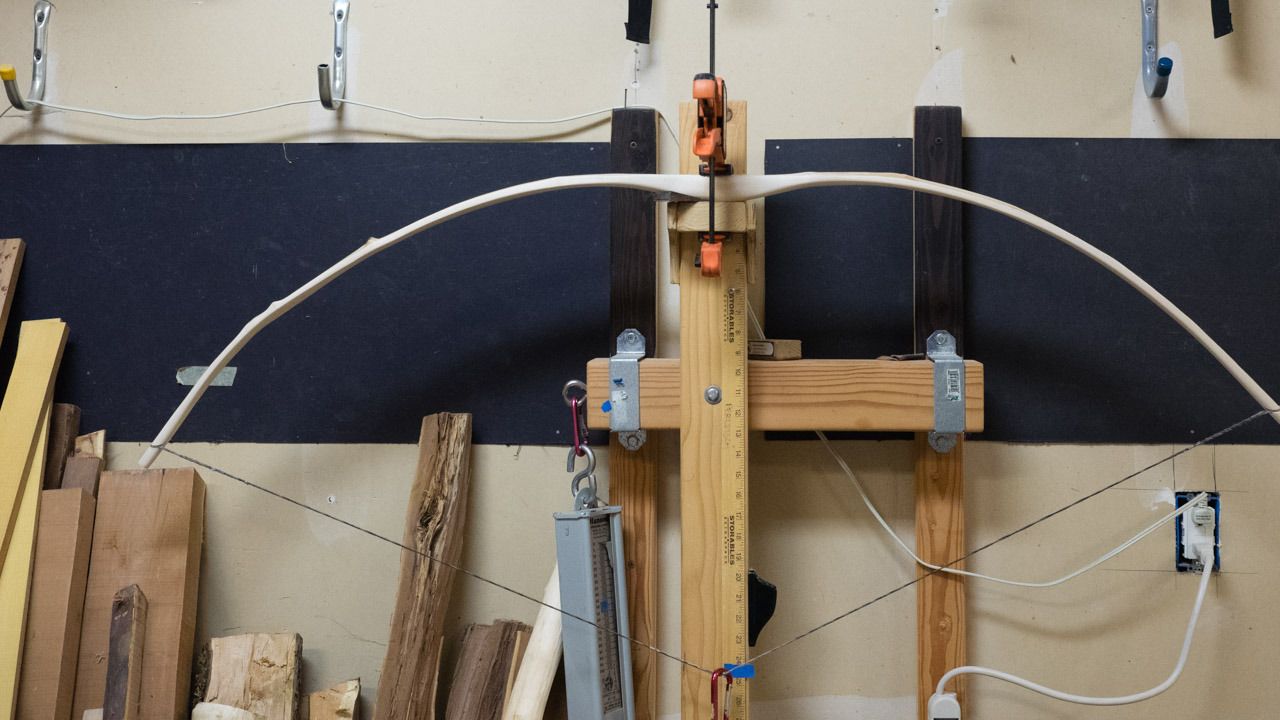I make 20" my new reference point and repeat the process of pulling the bow back in increments of one inch while monitoring the poundage at my reference point and removing wood when the poundage at my reference point begins to drop.
Visually the bow does not look like it is bending evenly. But you have to take into account character and unevenness in the limbs. The vine maple I harvest around my parts almost always has character, uneven reflex and whoop-de-dos and so you will rarely have a visually circular bend if you tiller such a bow correctly. The best way to accomplish proper tiller is to let the limb thickness guide you rather than what your eyes see. With the exception of knots and dog legs which need to be left a little thicker than the surrounding area, you want to strive for an even thickness taper down the length of the limbs.

Until now I have left the fades and the last six inches of the tips a little stiff. A common mistake that novice bowyers make is to take too much off the fades - this is a sure fire way to end up with an unrecoverable hinge or a lighter draw bow than you planned. But now I am going to remove excess wood from the fades. Do this slowly and monitor the thickness of the limbs through the transition into the fades carefully. Getting a perfect transition through the fades takes practice and you are better off keeping the fades a little on the stiff side until you get the hang of it.

I feather the handle into fades and begin rounding the edges of the limbs.


And here is the bow pulled to 24" - only three more inches to go!
